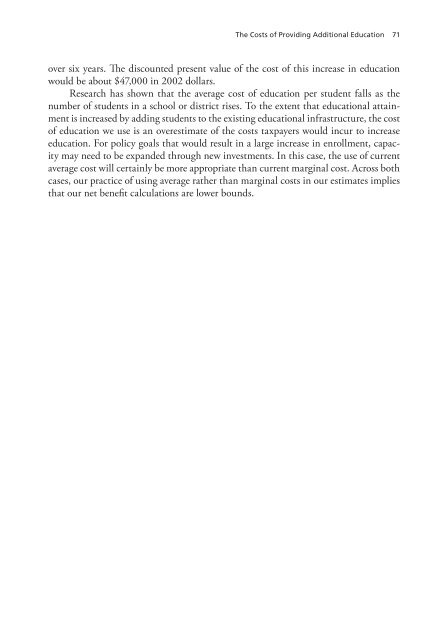The Benefits to Taxpayers from Increases in Students - RAND ...
The Benefits to Taxpayers from Increases in Students - RAND ...
The Benefits to Taxpayers from Increases in Students - RAND ...
You also want an ePaper? Increase the reach of your titles
YUMPU automatically turns print PDFs into web optimized ePapers that Google loves.
<strong>The</strong> Costs of Provid<strong>in</strong>g Additional Education 71<br />
over six years. <strong>The</strong> discounted present value of the cost of this <strong>in</strong>crease <strong>in</strong> education<br />
would be about $47,000 <strong>in</strong> 2002 dollars.<br />
Research has shown that the average cost of education per student falls as the<br />
number of students <strong>in</strong> a school or district rises. To the extent that educational atta<strong>in</strong>ment<br />
is <strong>in</strong>creased by add<strong>in</strong>g students <strong>to</strong> the exist<strong>in</strong>g educational <strong>in</strong>frastructure, the cost<br />
of education we use is an overestimate of the costs taxpayers would <strong>in</strong>cur <strong>to</strong> <strong>in</strong>crease<br />
education. For policy goals that would result <strong>in</strong> a large <strong>in</strong>crease <strong>in</strong> enrollment, capacity<br />
may need <strong>to</strong> be expanded through new <strong>in</strong>vestments. In this case, the use of current<br />
average cost will certa<strong>in</strong>ly be more appropriate than current marg<strong>in</strong>al cost. Across both<br />
cases, our practice of us<strong>in</strong>g average rather than marg<strong>in</strong>al costs <strong>in</strong> our estimates implies<br />
that our net benefit calculations are lower bounds.
















